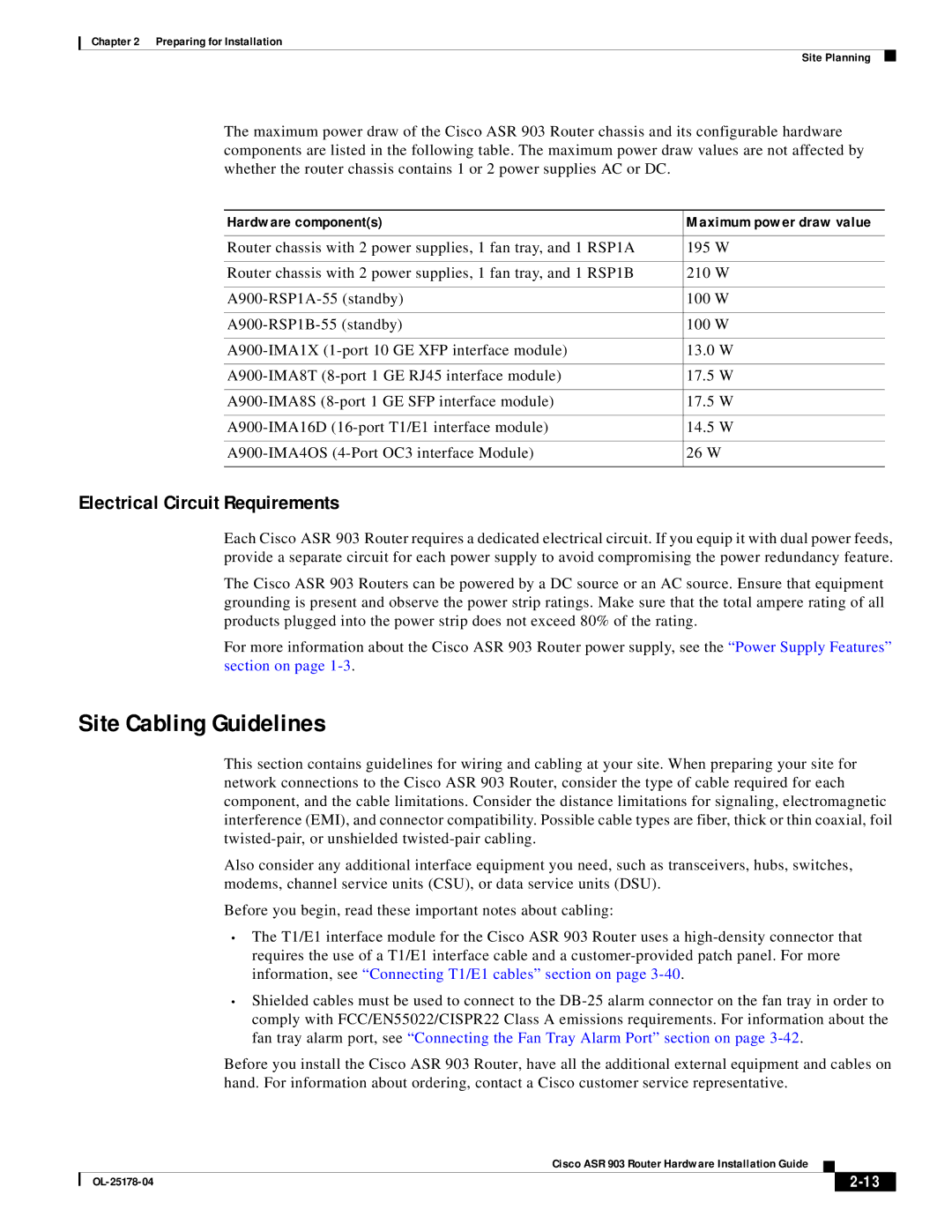Chapter 2 Preparing for Installation
Site Planning
The maximum power draw of the Cisco ASR 903 Router chassis and its configurable hardware components are listed in the following table. The maximum power draw values are not affected by whether the router chassis contains 1 or 2 power supplies AC or DC.
Hardware component(s) | Maximum power draw value |
|
|
Router chassis with 2 power supplies, 1 fan tray, and 1 RSP1A | 195 W |
|
|
Router chassis with 2 power supplies, 1 fan tray, and 1 RSP1B | 210 W |
|
|
100 W | |
|
|
100 W | |
|
|
13.0 W | |
|
|
17.5 W | |
|
|
17.5 W | |
|
|
14.5 W | |
|
|
26 W | |
|
|
Electrical Circuit Requirements
Each Cisco ASR 903 Router requires a dedicated electrical circuit. If you equip it with dual power feeds, provide a separate circuit for each power supply to avoid compromising the power redundancy feature.
The Cisco ASR 903 Routers can be powered by a DC source or an AC source. Ensure that equipment grounding is present and observe the power strip ratings. Make sure that the total ampere rating of all products plugged into the power strip does not exceed 80% of the rating.
For more information about the Cisco ASR 903 Router power supply, see the “Power Supply Features” section on page
Site Cabling Guidelines
This section contains guidelines for wiring and cabling at your site. When preparing your site for network connections to the Cisco ASR 903 Router, consider the type of cable required for each component, and the cable limitations. Consider the distance limitations for signaling, electromagnetic interference (EMI), and connector compatibility. Possible cable types are fiber, thick or thin coaxial, foil
Also consider any additional interface equipment you need, such as transceivers, hubs, switches, modems, channel service units (CSU), or data service units (DSU).
Before you begin, read these important notes about cabling:
•The T1/E1 interface module for the Cisco ASR 903 Router uses a
•Shielded cables must be used to connect to the
Before you install the Cisco ASR 903 Router, have all the additional external equipment and cables on hand. For information about ordering, contact a Cisco customer service representative.
|
| Cisco ASR 903 Router Hardware Installation Guide |
|
| |
|
|
| |||
|
|
|
| ||
|
|
|
| ||
